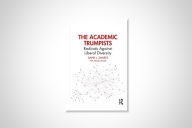You have /5 articles left.
Sign up for a free account or log in.
I know 2 things:
1. We will have a revolution in how higher education in designed, organized and delivered in the next 50 years - and this educational revolution will pivot around some technology or set of technologies.
2. We cannot accurately predict what this technology catalyzed and enabled postsecondary education revolution will be, what shape it will take, and what technologies will prove most important.
How do I know this? Social scientists have an honored and long tradition of totally missing big future changes, and of mis-estimating the most important master trends that shape our world.
3. Examples of Trends We Failed to Predict (and it would be great to hear your examples):
The Baby Boom: The U.S. baby boom lasted between 1946 to 1964, and witnessed a growth in the total fertility rate (TFR - the number of live births the average woman experiences) from just over 2 children in 1945 to a peak of 3.75 children in the late 1950s. As the baby boom cohort aged (a process described as looking like a snake swallowing a bowling ball), every economic, political, social, and educational institution has been altered. Did social scientists predict the U.S. (or Canadian or other Western countries) baby boom in the late 1940s? Nope.
The Rise in Female Labor Force Participation: In 1950, the rate of female labor force participation (for women 16 and over not in school) was about 34%. Today, this percentage exceed 70 percent. Perhaps the signs were all around in the 1950s that women would begin to enter the labor force in huge numbers, changing workplaces, families, and our educational institutions - but very few social scientists predicted the degree or rapidity that this trend would take.
The Divorce Revolution: From 1950 to 1960 the number of divorces every year was fairly stable, at around 400,000 a year. Starting in the late 1960s, the number of divorces started to explode, reaching 1.2 million in 1980 (before beginning to level off). In 1960, we had less than 10 divorces for every 1,000 married women. By 1980 (the peak of the divorce revolution) that number had climbed to 22. How many social scientists in 1960 predicted a doubling of the divorce rate in the next 20 years?
I pick these 3 trends because of their magnitude and impact on society. Our failure in 1950 to predict the major contours of society for the next 50 years should serve as a warning about our inability to grasp what the next 50 years will look like in higher education. We should keep making predictions, but we should be both modest and mindful that we will probably get it very wrong.
How do you predict higher ed will change by 2061?








